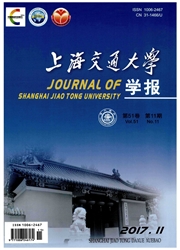

 中文摘要:
中文摘要:
为了提高神经电极长期稳定性,提出基于柔顺结构的新型减振神经电极的设计思路,对其柔性铰链进行建模分析,并采用有限元方法对电极-脑组织界面的微动进行静态分析和模态分析,研究了不同方向微振对电极-脑组织界面力学状态的影响,对新型减振电极与原电极的力学性能进行对比评估.结果显示,新型减振电极可以有效改善微振动环境下的应力状态:在横向微振环境下,有效降低最大应力6.64%;纵向微振环境下,有效降低最大应力4.47%;其二、三阶固有频率为3~8Hz,可避开微振的频率范围.新型减振电极可显著提高电极的减振能力,预期可有效提高电极工作寿命.
 英文摘要:
英文摘要:
Micromotion is one of the most important factors that influence the long-term stability of neural electrodes.In order to improve the long-term stability of brain-implanted electrodes,a neural electrode abutment which has the capability of vibration attenuation was developed to control different modes of micromotion in a more effective way.The compliant hinge was studied with the mechanics modeling analysis,and the static and modal mechanical states of neural electrode-brain tissue interface were investigated with finite element methods.The results of the finite element analysis confirmed that the novel neural electrode abutment had the anticipated micromotion-attenuation capability.The proportion of decline of von Mises stress was 4.47% on the longitudinal direction and 6.64% on the lateral direction.The results show that the novel neural electrode abutment is effective in reducing vibration,which has potential capabilities for improving the stability of neural electrodes in a long term.
 同期刊论文项目
同期刊论文项目
 同项目期刊论文
同项目期刊论文
 Experimental evaluation of neural probe’s insertion induced injury based on digital image correlatio
Experimental evaluation of neural probe’s insertion induced injury based on digital image correlatio 期刊信息
期刊信息
